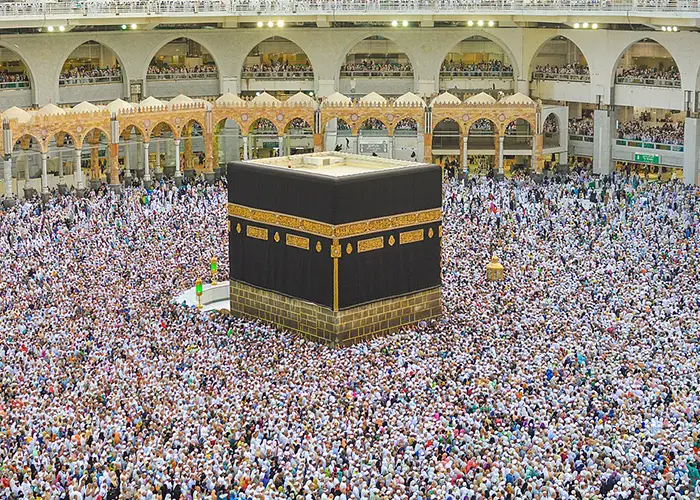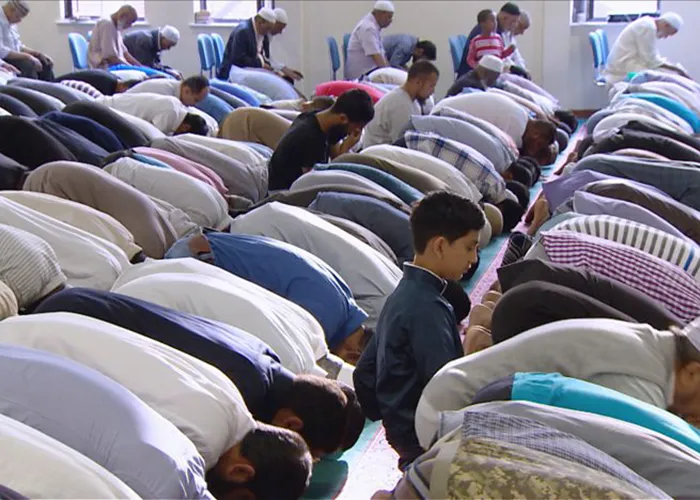Fatwa Panel of the Week – Volume02 Issue26
Rulings Related to the Qiblah:
Definition of Qiblah:
Qiblah refers to the direction of the Kaʿbah in Makkah, and prayer must be performed facing it. For other acts like animal slaughter, the same rule applies.
Here are the rules related to the Qiblah, according to the fatwas of the Grand Religious Authorities:
Grand Ayatollah Khamenei, Grand Ayatollah Sistani, and Grand Ayatollah Makarem Shirazi (may their eminence be preserved)
Facing Ka’aba during Prayer
| Ayatollah Khamenei | Ayatollah Sistani | Ayatollah Makarem Shirazi |
A person who is obligated to perform prayer (mukallaf) must pray facing the Kaʿbah, which is why the Kaʿbah is referred to as the “Qiblah.” However, for those who are far from it and for whom direct alignment with it is not possible, it is sufficient to say they are praying in the direction of the Qiblah.
4. Determining the Qiblah: The person praying must have certainty or confidence in the direction of the Qiblah, whether through a correct and reliable Qiblah compass, or by the position of the sun and stars (if they know how to use them), or by other methods. If they cannot gain confidence, they should pray in the direction that they most strongly suspect to be the Qiblah, such as the direction indicated by the mihrab (prayer niche) of a mosque.
One who has no means of determining the direction of the Qiblah and has no inclination toward any direction must, based on obligatory precaution, pray in all four directions. If there is not enough time to perform four prayers, they should repeat the prayer as many times as time allows. · If someone, despite trying to determine the direction of the Qiblah, makes a mistake, and the deviation is less than the right or left of the Qiblah (approximately within 90 degrees), the prayer is valid. If the error is noticed during the prayer, they must continue the rest of the prayer facing the correct direction, regardless of whether the prayer time is still valid or not. |
1. Obligation to Face the Qiblah:
Standing prayers: Chest and abdomen must face Qiblah; significant deviation invalidates the prayer. As a precaution, toes should also face the Qiblah. Sitting prayers: Chest and abdomen must face Qiblah and face should not notably deviate. Unable to sit, must lie on the side so that front faces Qiblah, preferably right side; else on back with soles toward Qiblah 2. Same as Ayatollah Khamenei’s Fatwa. 3. Same as Ayatollah Khamenei’s Fatwa. 4. Determining the Qiblah:
5. If No Means of Determination:
|
1. Obligation to Face the Qiblah:
2. Same as Ayatollah Khamenei’s Fatwa. 3. Same as Ayatollah Khamenei’s Fatwa. 4. Same as Ayatollah Khamenei’s Fatwa.
5. If No Means of Determination:
|
Other Qiblah-Dependent Acts
| 6. One who lacks certainty about the Qiblah direction must rely on their best judgment in other acts that must be performed facing the Qiblah, such as animal slaughter. If no inclination toward any direction exists and all directions seem equal, it is valid to act in any direction. | 6. Acts requiring facing Qiblah, like animal slaughter, are valid if performed according to the best current supposition. If no supposition is possible, any direction suffices. | 6. Acts like animal slaughter requiring facing the Qiblah follow the same rules: if uncertain, do it in the best-estimated direction; if completely uncertain, any direction is valid. The same applies to burying the dead. |
editor's pick
news via inbox
Subscribe to the newsletter.




